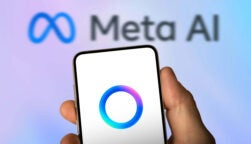After teasing the removal of the legacy blue check system for months, Twitter has finally revoked the privilege for notable accounts, and unsurprisingly, its caused waves of carnage and confusion across the site.
The serial CEO hasn’t removed the check from all users though, with Elon Musk peculiarly covering the cost for William Shatner’s, Stephen King’s, and LeBron James’s Twitter Blue subscriptions out of his own pocket.
The end of the legacy system is part of Musk’s attempt to push users to sign up for the pay monthly subscription. But with this latest move sparking concerns around impersonation and disinformation, the reversal could result in users abandoning the platform altogether.
Twitter Removes The Legacy Blue Tick for Notable Twitter Users
Another day, another shake-up at Twitter HQ. As promised, Twitter began withdrawing hard-earned blue ticks from users yesterday on 4/20 – a date that Musk proposed earlier this month.
The reversal of the legacy program is turning out to be just as ruthless as suspected, with Musk and his team removing the checks from a sweeping array of notable celebrities, political leaders, academics, and journalists.
Which celebrities lost their blue tick on Twitter?
Twitter removed the verification symbol for almost all legacy users, including big names like:
- Beyoncé
- Pope Francis
- Kim Kardashian
- Bill Gates
- Donald Trump
- Oprah
Twitter didn’t remove the blue check for all legacy users though. Yesterday, Musk tweeted that he would be “personally paying” for some celebrities to keep their blue check, including Willian Shatner, Stephen King, and LeBron James.
I’m paying for a few personally
— Elon Musk (@elonmusk) April 20, 2023
But while this could be mistaken as a charitable act on the CEO’s behalf, it’s not. These celebrities have all been critical about the app’s transition to Twitter Blue in the past, with basketball player LeBron James previously tweeting “Welp guess my blue (tick) will be gone soon cause if you know me I ain’t paying the 5.”
Why Did Musk Decide to Ditch Legacy Tick Marks?
Twitter first rolled out blue tick verification in 2009, following a court case where a former professional baseball player sued the app over imposter accounts.
However, despite its success in limiting imitators over the years, Tesla and SpaceX CEO Musk made abolishing the system central to his business strategy since he took over the social media network in October of last year.
This is because by removing legacy ticks, more users are incentivized to sign up for the platform’s Twitter Blue subscription, a service that lets users keep their blue tick, and also access exclusive features like Undo Tweet options and long-form video posting.
But the system, which costs most users $8 per month, isn’t just available to individuals. The paid verification service is also available to businesses, who can receive a gold check mark through purchasing Twitter Blue for Business, and government institutions, who can become verified with grey ticks instead.
Despite Musk and his team’s best efforts, the gamble isn’t appearing to be paying off, with research from Travis Brown revealing that only 5% of legacy verification accounts have signed up for Twitter Blue. But what other issues is Twitter’s verification overhaul causing?
Is Musk Making a Mistake?
Now that most notable figures on the platform lack blue ticks, opportunities for impersonation and the spread of disinformation are running rampant.
Just hours after Hillary Clinton lost her legacy mark, a dupe Twitter account claiming to be the US Senator announced she would be running for the presidency, purposely misleading thousands of its followers.
Removing the symbol from government agencies is sparking concerns around safety too, with US Senator Brian Schatz recently commenting on the lack of verification for agencies like the Federal Emergency Management Agency (FEMA) that assists the public before and after national sisters.
“I am not complaining about my own check mark, I just think during natural disasters it’s essential to know that FEMA is actually FEMA.” – Brian Schatz, US Senator
Alongside the mass unchecking, Twitter has also gotten into hot water recently for assigning incorrect ‘government-funded’ labels on leading media organizations like the BBC and Russia’s RT. While this misstep has since been rectified, the blunder has stroked more mistrust on the platform and has prompted major publications like NPR and Canada’s CBC to abandon ship.
Musk claims that these changes will “democratize the site”, and believes the company is “headed to a good place”.
However, with experts warning that prioritizing profits over legacy ticks will make the platform a less reliable source of accurate news and information, it’s likely that these actions could soon scare off even more users and advertisers and make the app even less viable in the future.




